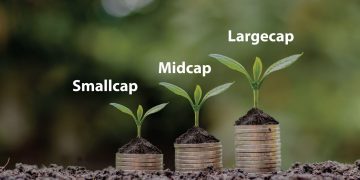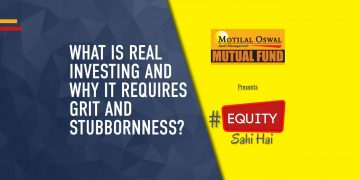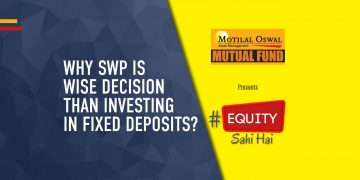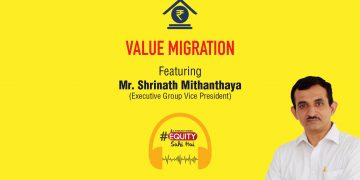We all love tax-saving hacks. And when that comes with significant inflation-beating CAGR, it is a cherry on top. Yes, we are talking about ELSS or Equity-Linked Savings Scheme Mutual Fund, which can give us the two-way street to wealth creation. One of the finest exemplars of 80C deductions, ELSS funds can reduce your taxable income up to Rs 1.5 lakhs. So, if you’re looking to build up a nest egg along with scaling down your taxable income, you should look into ELSS funds. In this blog, we have compiled thorough research about everything you need to know before you invest in ELSS mutual funds.
What are ELSS Funds?
ELSS(Equity-Linked Savings Scheme) funds are tax-saving mutual funds that invest a minimum of 65% of their corpus into equity or equity-related instruments and the rest into other fixed-income securities. These funds offer a tax exemption of up to 1.5 lakhs under Section 80C of the Income Tax Act.
Benefits of investing in ELSS funds
1. Diversification of investments
ELSS funds invest in different types of asset classes. Further more, the fund also invests in a diversified equities of companies from varied sectors and themes, having different market caps. This diversification provides you a hedge against market volatilities, so that you donot lose money when a particular sector or a company underperforms during the investing tenure.
2. Lower Lock-in Period
The lock-in period of ELSS mutual funds is only 3 years. This is lower than that of other tax saving 80C instruments like PPFs and ULIPs, having lock-in periods of 5 and 15 years respectively. The low lock-in period gives you the benefit of early redemption, which makes ELSS funds a good deal to invest for your short and medium term financial goals.
3. Economical Minimum amount
You can invest in ELSS funds with as low as ₹500. Hence, it makes it easy for you to invest negligible amount each month instead of overwhelming yourself by keeping aside thousands of bucks outside the budget.
4. Taxation Benefits
Every years, you can reduce your taxable income by Rs 1.5 lakhs by investing in tax saving schemes like ELSS funds. This gives you a tax benefit up to Rs. 46,800 annually. However, you still have to pay LTCG(Long term capital gains) tax if your profit exceeds Rs 1 lakh.
5. Compounding Benefits
Since, ELSS mutual funds come with a minimum lock-in period of 3 months, it gives your investment ample time to grow without any pre-mature redemption. Hence, your portfolio can enjoy the benefits of compounding since you cannot withdraw the corpus before three years.
6. Comparatively Higher Returns
Generally, ELSS funds provide an average CAGR of 10-12%. This outperforms other 80C instruments like Fixed Deposit, PPF(Public Provident Fund) or NSC(National Savings Certificate) that provide annual returns of 5-7%, which might not beat inflation.
Features of ELSS Funds
- ELSS funds invest 80% of their portfolio into equities of companies.
- These funds do not have any entry or exit load.
- The minimum investment tenure is three years. However, there is no cap on the maximum investment timeline.
How to invest in ELSS Funds
Investing in ELSS mutual funds is a simple process that can be done in a few steps:
1. Choose a fund
Research and select an ELSS fund that fits your investment goals and risk profile. You can compare the performance, expense ratio, and portfolio of different funds to make your decision.
2. Open an account:
To invest in an ELSS fund, you will need to open a mutual fund account with a fund house or a broker. You will need to provide personal and financial information, as well as proof of identity and address.
3. Invest
After your account is open, you can either make a one-time Lump sum investment or set up an SIP(Systematic Investment Plan) to invest consistently. Most fund houses offer an option for online investments.
4. Track your investment
Once you have invested, it is important to keep a track on the how your investments are performing. Keep a tab on the NAV(Net Asset Value) of your fund, which fluctuates based on market conditions.
Factors to consider before investing in ELSS Mutual Funds
1. Risk Appetite
ELSS Funds are equity-oriented schemes and hence, are subject to high market volatilities. You should understand your risk appetite before investing in ELSS funds.
2. Investment objective
ELSS Funds are ideally suited for those who are seeking long-term capital appreciation with tax benefits. Hence, if you are saving up to redeem the investment after a long duration to finance your goals, ELSS funds might be a good pick.
3. Fund performance
Before investing in ELSS funds, it is important to look at the fund’s historical performance, returns and volatility levels. Generally, an ELSS fund that has provided a CAGR between 12-14% is considered a decent pick.
4. Fund manager’s track record
Contemplate the fund manager’s experience and his track record in managing similar funds to get an idea about his operational performance in asset management.
5. Asset allocation
A fund’s asset allocation pattern tells a lot about its diversification and risk level. Before investing, try to pick funds with a decently diversified portfolio which invests across various themes and sectors.
Comparing ELSS returns with other tax-saving instruments
| Investment | Lock-in Period (Years) | Returns | Tax(if any) |
| ELSS(Equity-linked Savings Scheme) | 3 | 12-14% | LTCG(after 1 lakh) |
| PPF(Public Provident Fund) | 15 | 7-8% | None |
| FD(Fixed Deposit) | 5 | 6.5-7.5% | Income Tax |
| NPS(National Pension Scheme) | Uptil Retirement | 7-8% | Partially Taxable |
| NSC(National Savings Certificate) | 5 | 7-8% | Income Tax |
In conclusion, ELSS funds are a good pick for an investor looking for long term capital appreciation along with tax benefits. While equity instruments are not a one-size-fits-all pick, it is important to analyse your financial goals to decide whether or not to invest in ELSS funds.
Disclaimer: The above blog is only for informational purposes and not an investment advice. Research well before investing in any equity instruments, or consult a financial advisor. Mutual Funds are subject to market risks. Read all scheme related documents carefully.












































